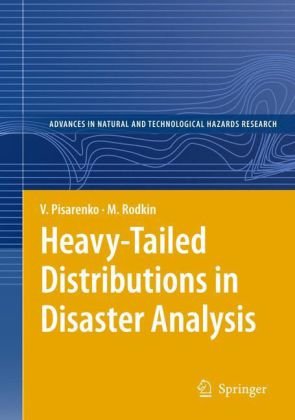

Most ebook files are in PDF format, so you can easily read them using various software such as Foxit Reader or directly on the Google Chrome browser.
Some ebook files are released by publishers in other formats such as .awz, .mobi, .epub, .fb2, etc. You may need to install specific software to read these formats on mobile/PC, such as Calibre.
Please read the tutorial at this link: https://ebookbell.com/faq
We offer FREE conversion to the popular formats you request; however, this may take some time. Therefore, right after payment, please email us, and we will try to provide the service as quickly as possible.
For some exceptional file formats or broken links (if any), please refrain from opening any disputes. Instead, email us first, and we will try to assist within a maximum of 6 hours.
EbookBell Team

0.0
0 reviewsMathematically, natural disasters of all types are characterized by heavy tailed distributions. The analysis of such distributions with common methods, such as averages and dispersions, can therefore lead to erroneous conclusions. The statistical methods described in this book avoid such pitfalls. Seismic disasters are studied, primarily thanks to the availability of an ample statistical database. New approaches are presented to seismic risk estimation and forecasting the damage caused by earthquakes, ranging from typical, moderate events to very rare, extreme disasters. Analysis of these latter events is based on the limit theorems of probability and the duality of the generalized Pareto distribution and generalized extreme value distribution. It is shown that the parameter most widely used to estimate seismic risk – Mmax, the maximum possible earthquake value – is potentially non-robust. Robust analogues of this parameter are suggested and calculated for some seismic catalogues. Trends in the costs inferred by damage from natural disasters as related to changing social and economic situations are examined for different regions. The results obtained argue for sustainable development, whereas entirely different, incorrect conclusions can be drawn if the specific properties of the heavy-tailed distribution and change in completeness of data on natural hazards are neglected. Audience: This pioneering work is directed at risk assessment specialists in general, seismologists, administrators and all those interested in natural disasters and their impact on society.